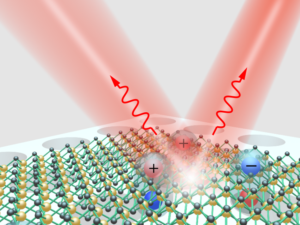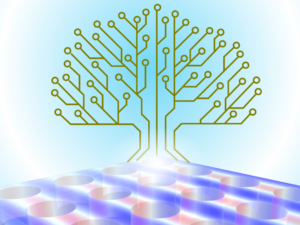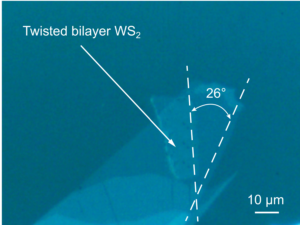→ Stay up to date with Recent Highlights
FEATURED RESEARCH

Ⅲ: Coherent Light Control of Dark Excitons
A double-edged sword in two-dimensional material science and technology is optically forbidden dark exciton. On the one hand, it is fascinating for condensed matter physics, quantum information processing, and optoelectronics due to its long lifetime. On the other hand, it is notorious for being optically inaccessible from both excitation and detection standpoints. Here, we provide an efficient and low-loss solution to the dilemma by reintroducing photonic bound states in the continuum (BICs) to manipulate dark excitons in the momentum space. The BICs could be an intriguing photonic platform to reshape light-matter interactions in the nearby quantum materials.

Ⅱ: Universal AI for Ubiquitous Resonances
Resonance is ubiquitous in optics, physics, and mechanics. While one can use numerical simulations to sweep geometric and material parameters of structures, these simulations usually require a considerably long time and substantial computational resources. We developed a universal deep-learning strategy to design high-finesse resonances with ultrasharp spectral features. Applying them to photonic bound states in the continuum (BICs), we decomposed a spectrum into a relatively smooth background and multiple spectral extremes, followed by an adaptive data acquisition and a regulation with a classical Fano resonance equation.

Ⅰ: Atomic-scale Magneto-chiral Effect
The interplay between chirality and magnetism generates a distinct physical process, the magneto-chiral effect, which enables one to develop functionalities that cannot be achieved solely by any of the two. Such a process is universal with the breaking of parity-inversion and time-reversal symmetry simultaneously. However, the magneto-chiral effect observed so far is weak when the matter responds to photons, electrons, or phonons. Here we report the first observation of a strong magneto-chiral response to excitons in a twisted bilayer tungsten disulfide with the amplitude of excitonic magneto-chiral anisotropy reaching a value of ~4%.
RECENT HIGHLIGHTS
Mar 2025: Lán Lab has another Ph.D. student thesis defense. Congratulations, Dr. Sam Lin! Way to go!
Feb 2025: Lán Lab has our first Ph.D. student thesis defense. Big congrats, Dr. Yixin Chen!
Aug 2024: Lán Lab is excited to work with Dr. Minxiang Zeng and Dr. Qingsheng Wang on Optical Hybrid Materials funded by NSF.
Jul 2024: Lán Lab is proud to be part of the NGMM team on Semiconductor Manufacturing supported by DARPA.
Oct 2023: Lán Lab is excited to work with Dr. Alexander Cerjan on Nonlinear Photonics under Sandia’s LDRD program, part of the DOE funds.
Nov 2022: Lán Lab’s work on Dark Excitons appeared in Nature Communications. Great job!
Aug 2022: Lán Lab’s work on Machine Learning is online in Laser & Photonics Reviews, featured on the Frontispiece.
ACKNOWLEDGEMENT

